
- Elevation 1413m
- When to climb October - January, March - May
- Expect to hike 3 - 5 hours, which can comfortably be done as a beginner-friendly day trip from Tokyo.
Mountain stats
2.5 hours from Shinjuku via a direct highway bus to Lake Yamanaka-ko.
2 hours drive from Tokyo. There is a car park at the trailhead, but it can only fit 10 cars.
Mt Ishiwari (石割山 Ishiwari-yama) is a mountain right next to Lake Yamanaka-ko, and its close proximity to Mt Fuji makes for some excellent scenery if the weather is in your favour. With good public transport access via a direct bus from Shinjuku to the trailhead, Mt Ishiwari has a number of course options ranging from 4km to 10km, depending on if you want to visit the neighbouring Mt Hirao and Mt Ohira. We opted for the longer 10km day hike, which takes just under 5 hours. Mt Ishiwari is also known for being a 100 Famous Mountain of Yamanashi.
With an elevation of 1413m, it can also be climbed in colder months, although I would double-check the trail conditions on YAMAP before climbing. Generally, the highest likelihood of snow is in February, and then there may be some snow on either side of that in January and March.
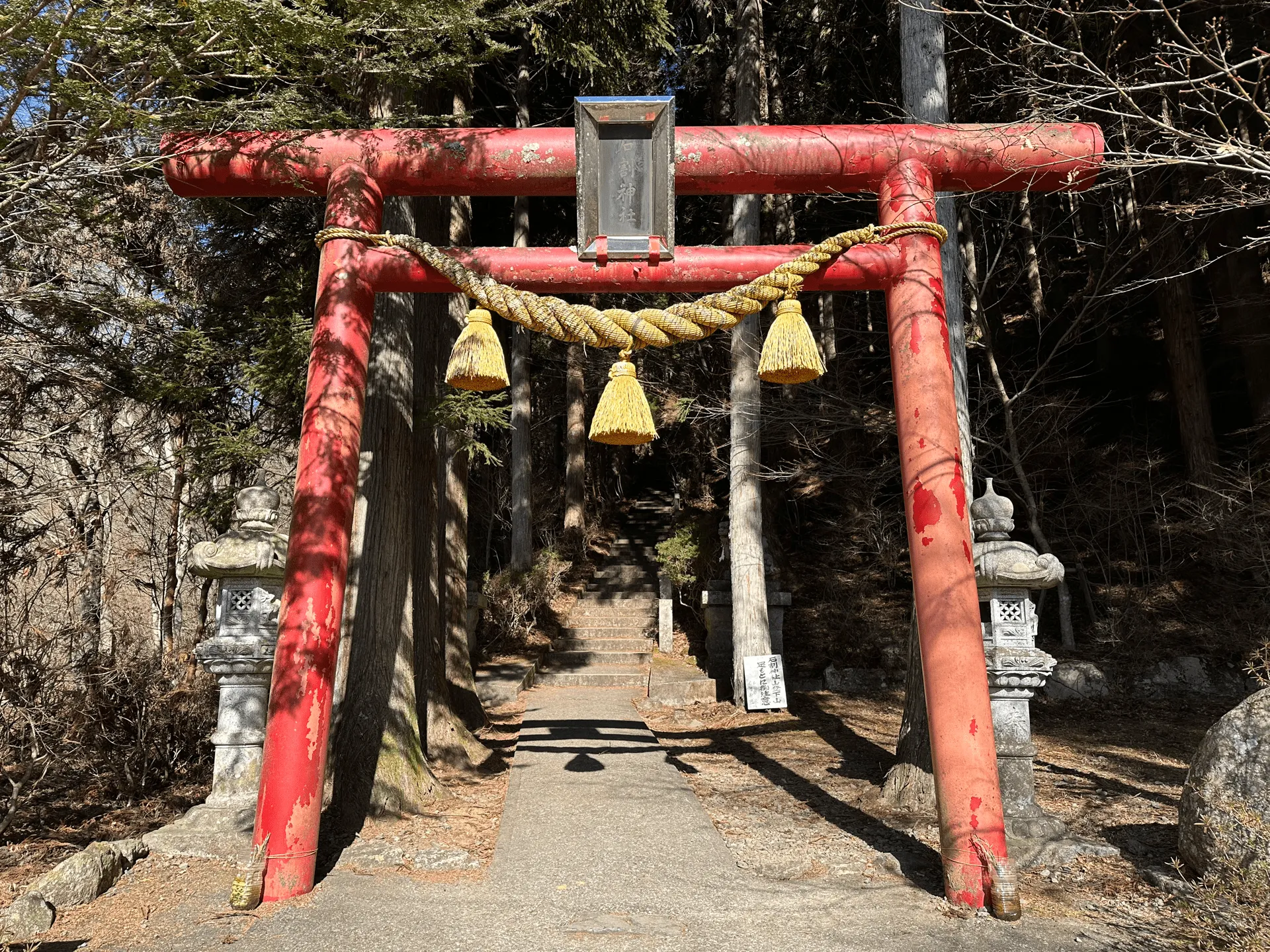
I climbed Mt Ishiwari in mid-January of 2024 with a couple of friends, and we began our hike just after 10am. The very first hurdle you’ll face is a very long, soul-crushing staircase. This is probably the toughest part of the course, so once you’re past this it’s a relatively easy hike.
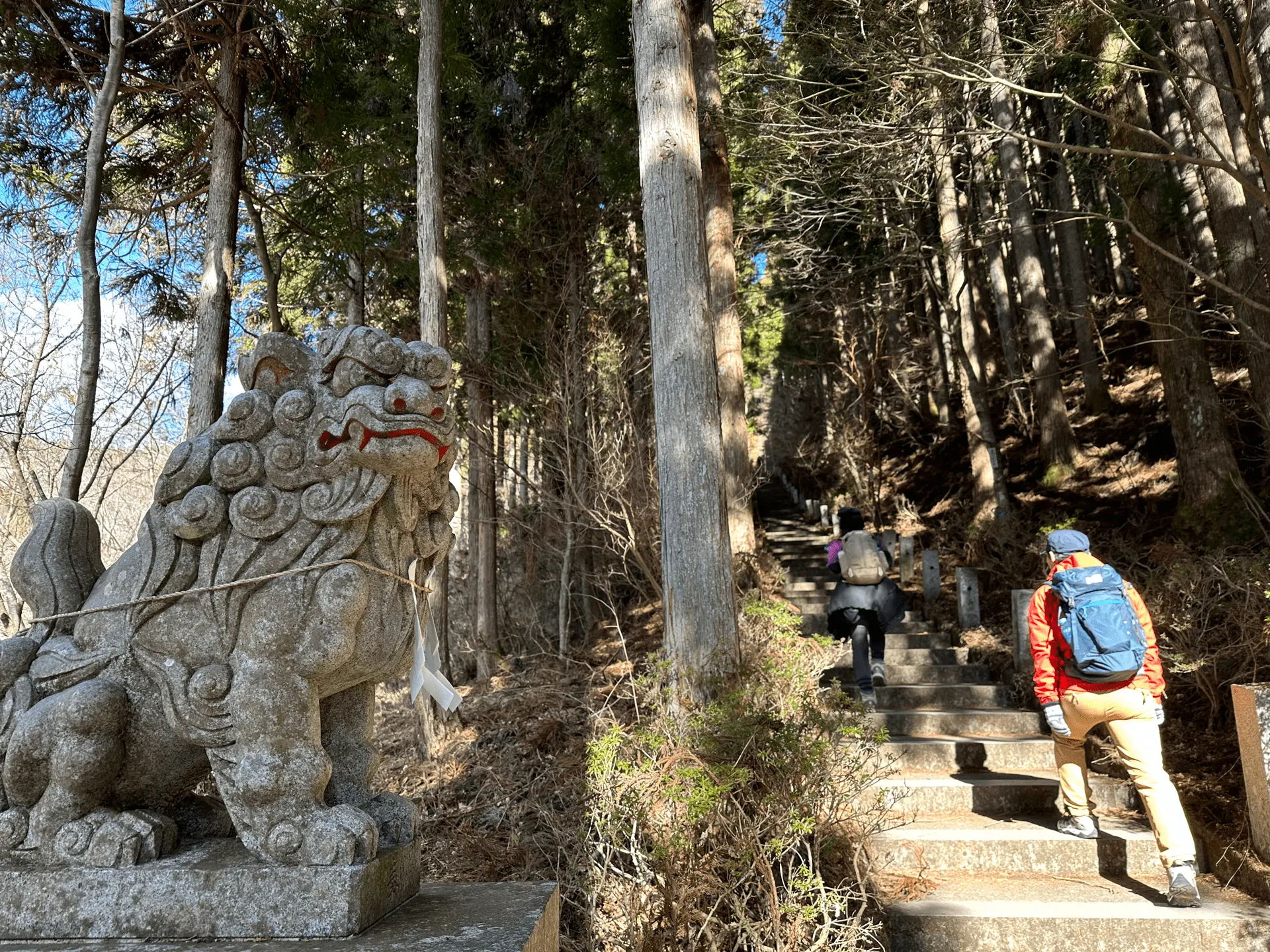
We passed by some people going in the opposite direction, possibly so that they get to go down these stairs instead of up. The overall elevation gain is still going to be the same and so I don’t think one way is better than the other - it depends how much you hate stairs!
Both ends of the trail have an onsen too, so maybe you could make your choice on which onsen you’d prefer, or if there’s a specific restaurant you want to visit at the end of the trail.
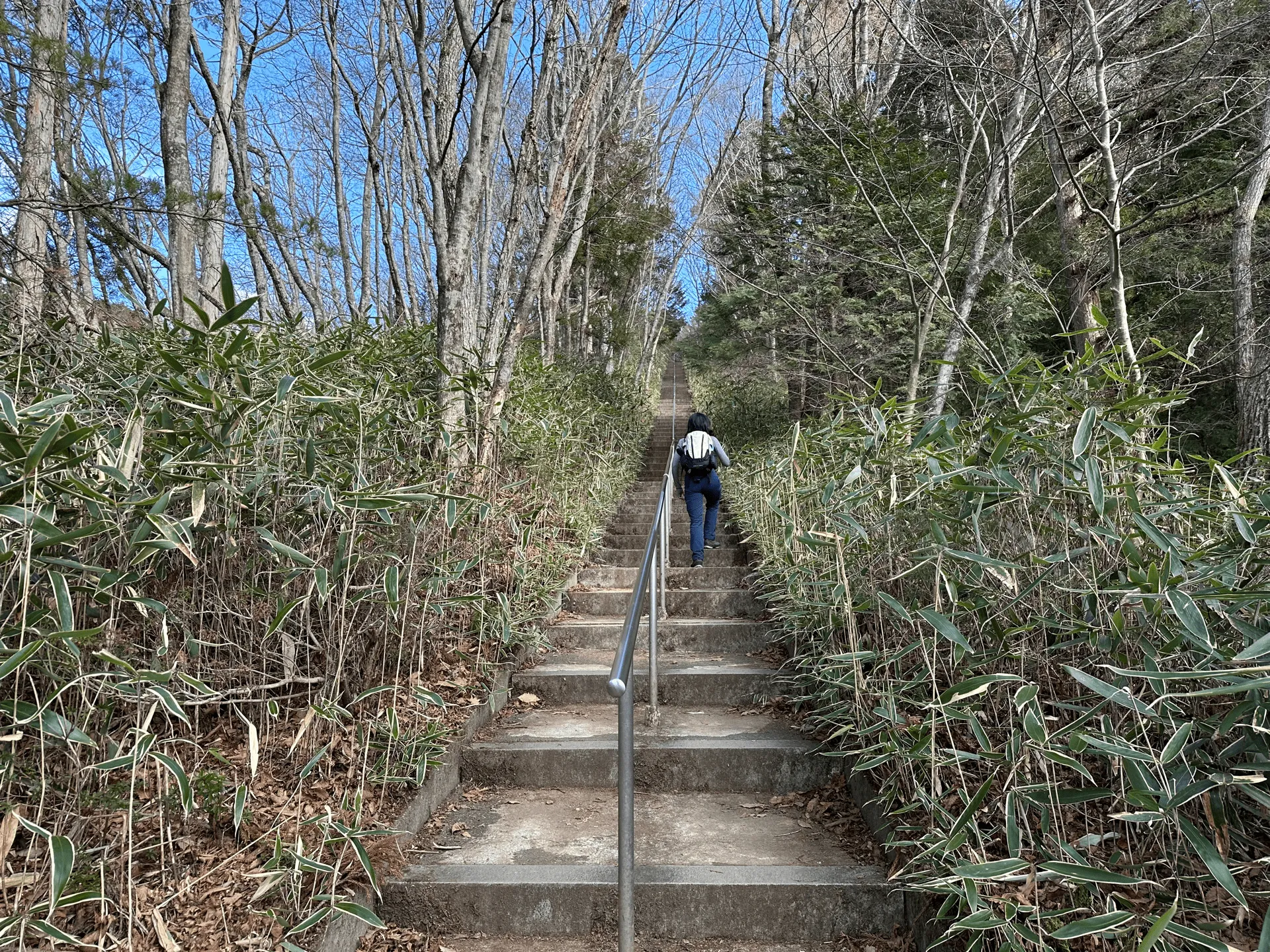
The next point you’ll pass in the course is Ishiwari Shrine, which features a large cracked rock you can pass through.
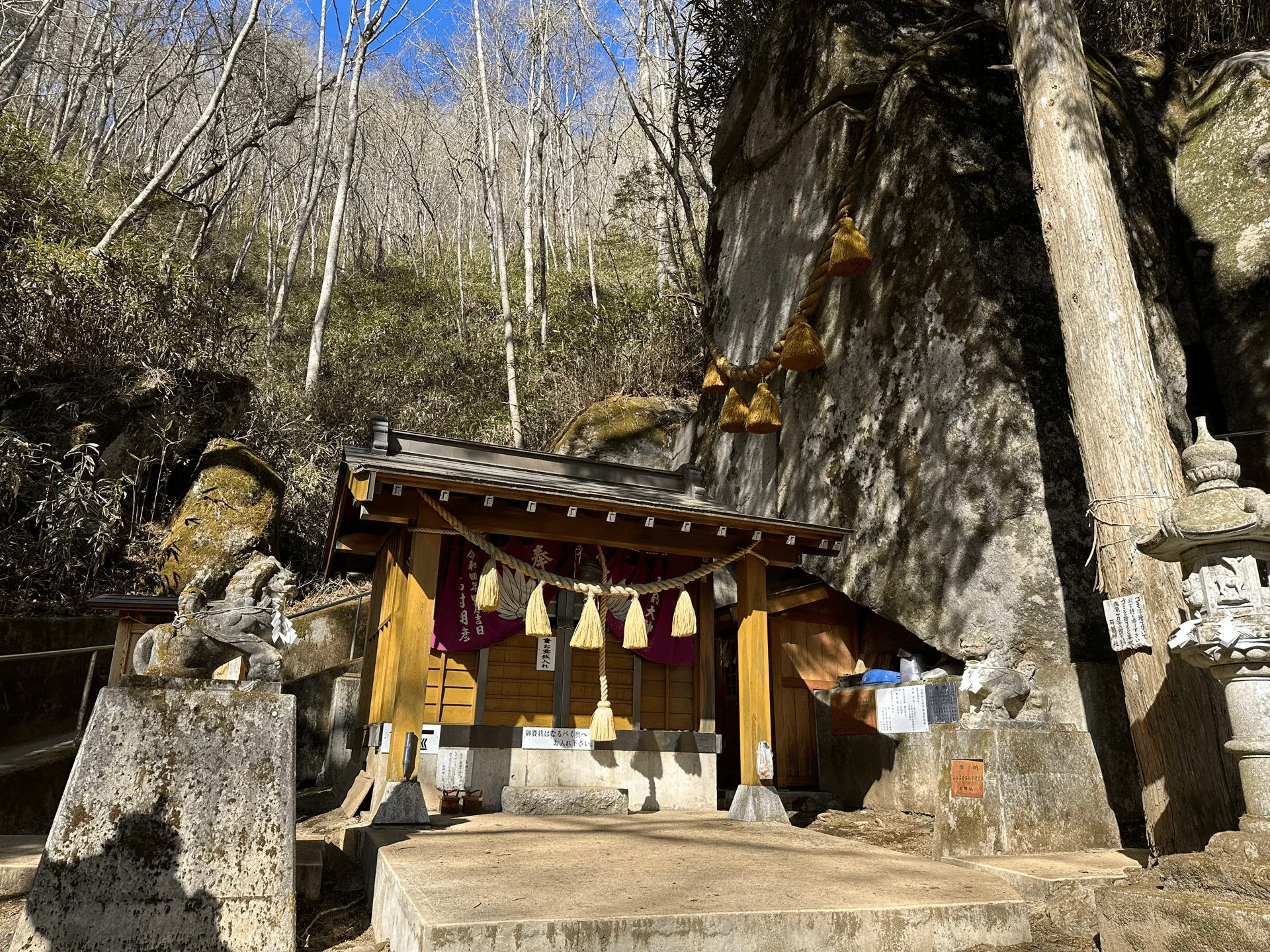
For those who aren’t too tired out from the stairs, it’s said that if you do three loops around the shrine and pass through this rock, you will be granted good luck. I prayed for a good 2024 hiking year without any injuries.
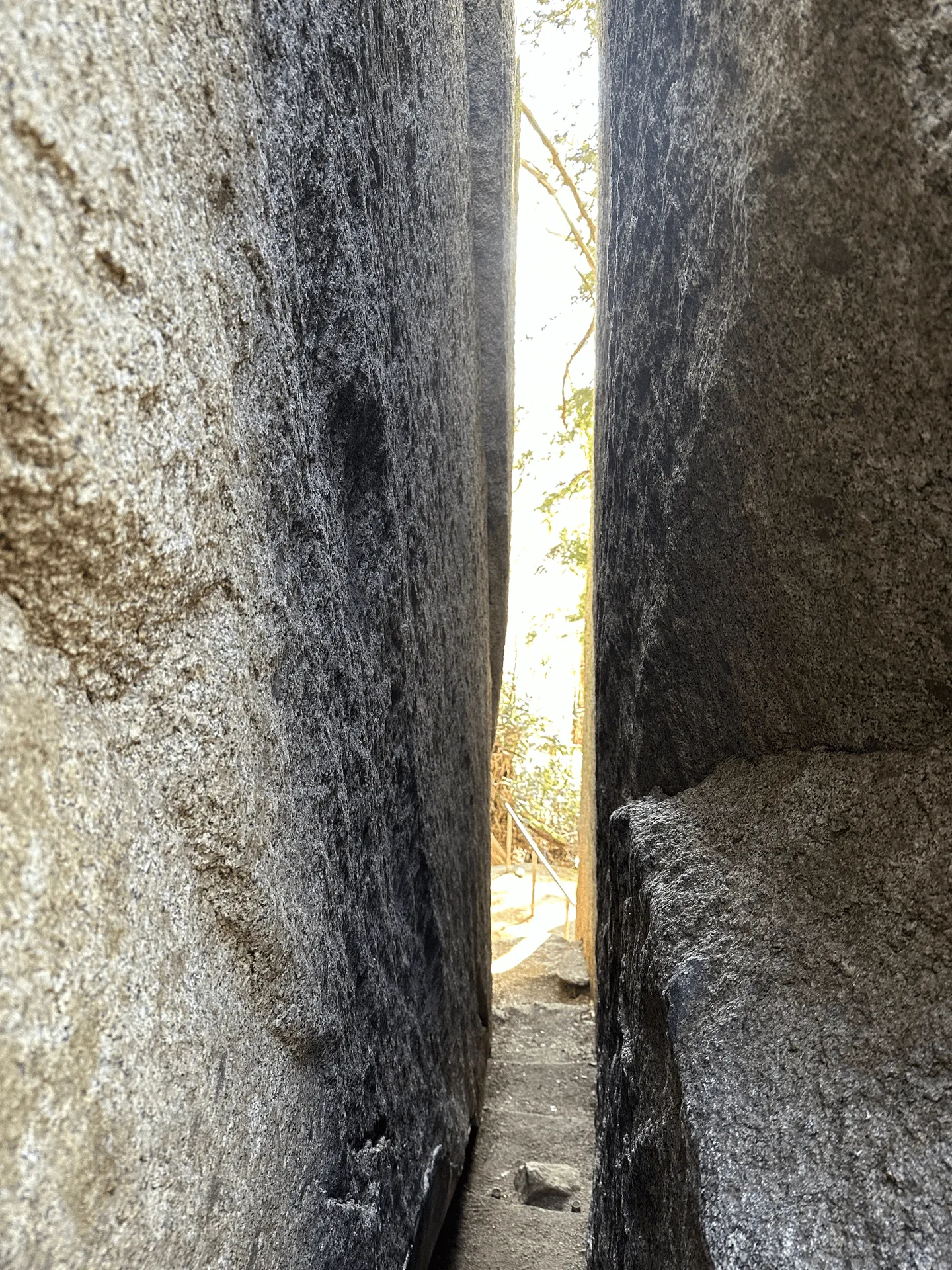
After under 2 hours of hiking, and fairly soon after the shrine, you’ll reach the peak of Mt Ishiwari (石割山). Mt Fuji was a little bit shy behind the clouds today, but it wasn’t a bad view! From here, you can head back to the trailhead if you want to take the shorter 4km course. But we were planning on doing the 10km point-to-point hike, which passes by two more peaks before descending back to Lake Yamanaka-ko.
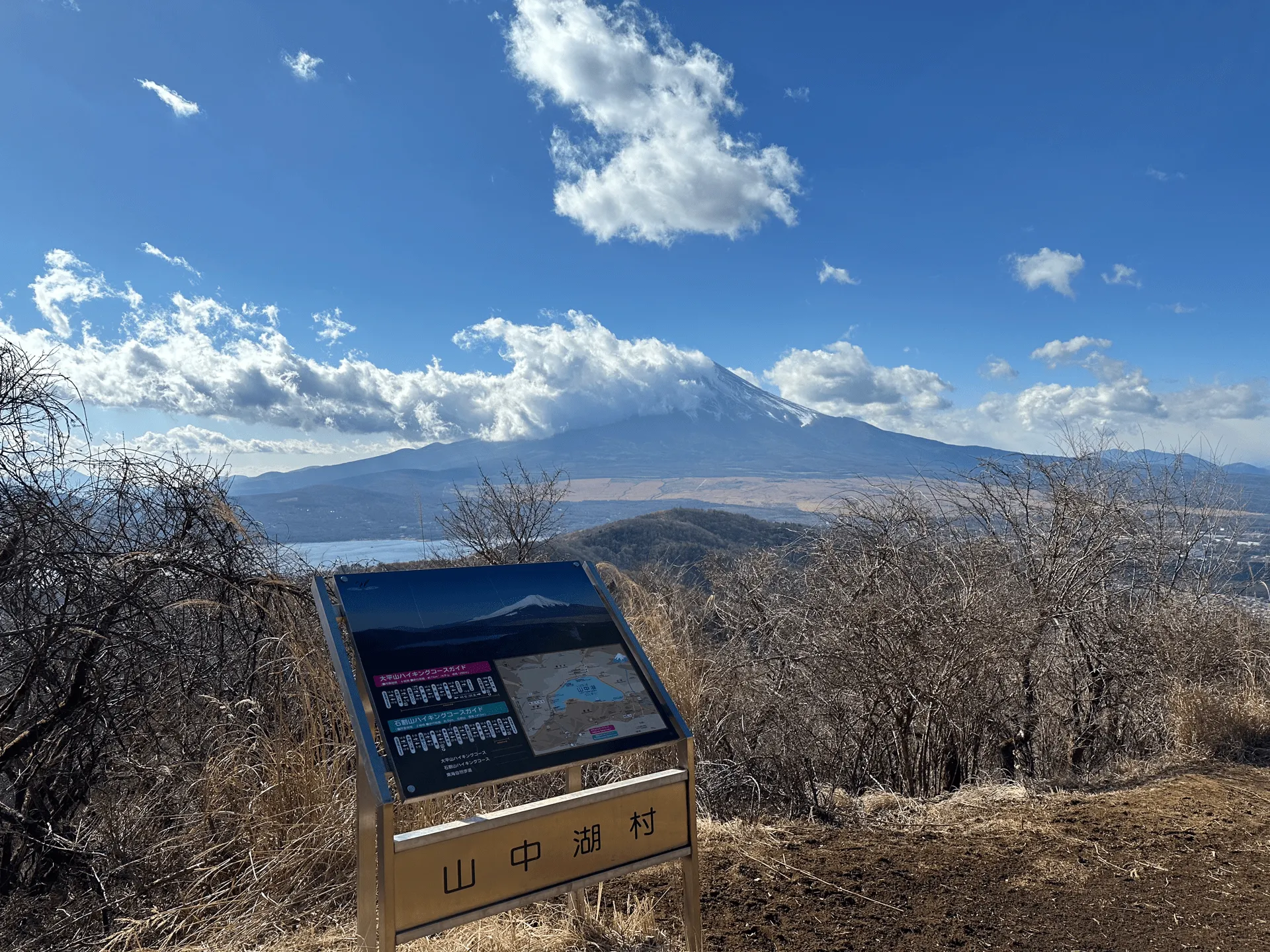
It was pretty windy and cold at the summit so we decided to continue on without having too much of a break. From here, there’s quite a steep (and a little muddy) trail downwards. There’s a rope you can hold onto for most of it though, which makes things a little easier.
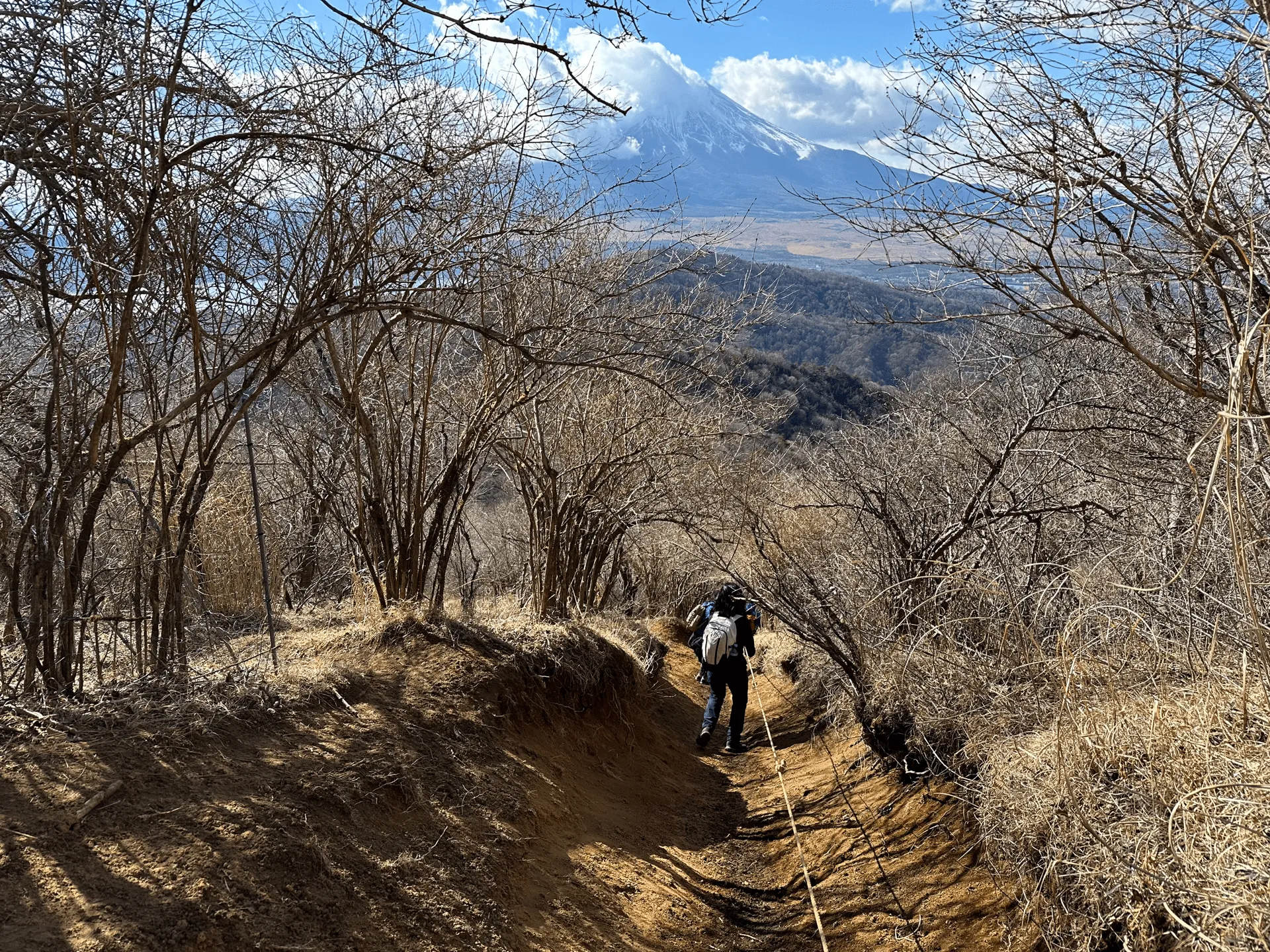
After the descent and then a little bit more of a climb, you’ll reach the second peak, Mt Hirao (平尾山), again with excellent views of Mt Fuji. We decided to take our lunch break here, although the winds kept us pretty chilled. I’ve recently started bringing my burner along to hikes but the strong winds today foiled my efforts to try and properly boil some water.

The weather forecast for the evening was snow (in Tokyo as well!) so as we started our descent the skies started to become a bit cloudier. There’s some stretches of flat trail here, with the opportunity to see Mt Fuji looming before you, if you are lucky.

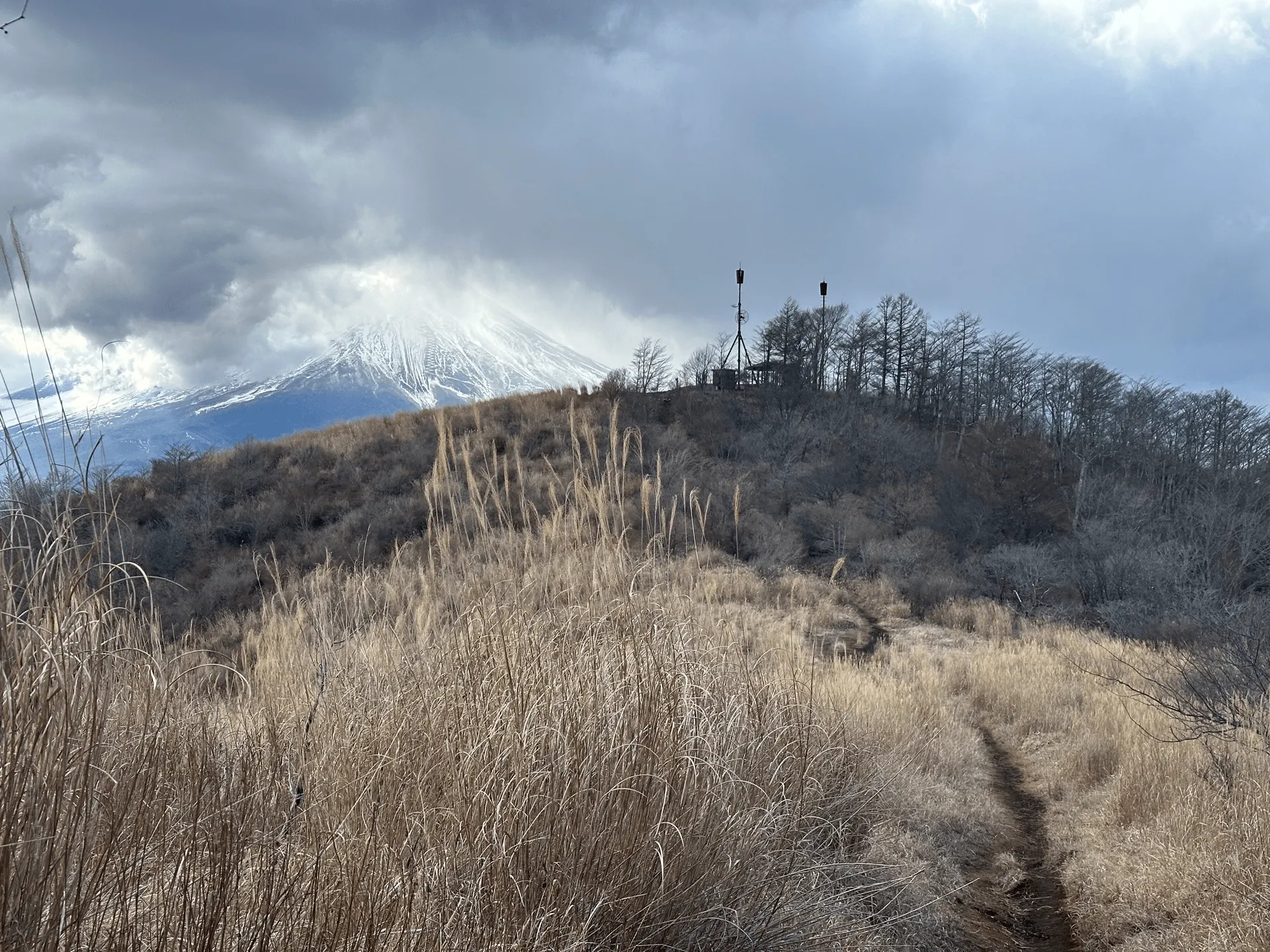
Finally we reach our third and final summit for the day, Mt Ohira (大平山). Even with the clouds, Mt Fuji still makes for a beautiful sight.
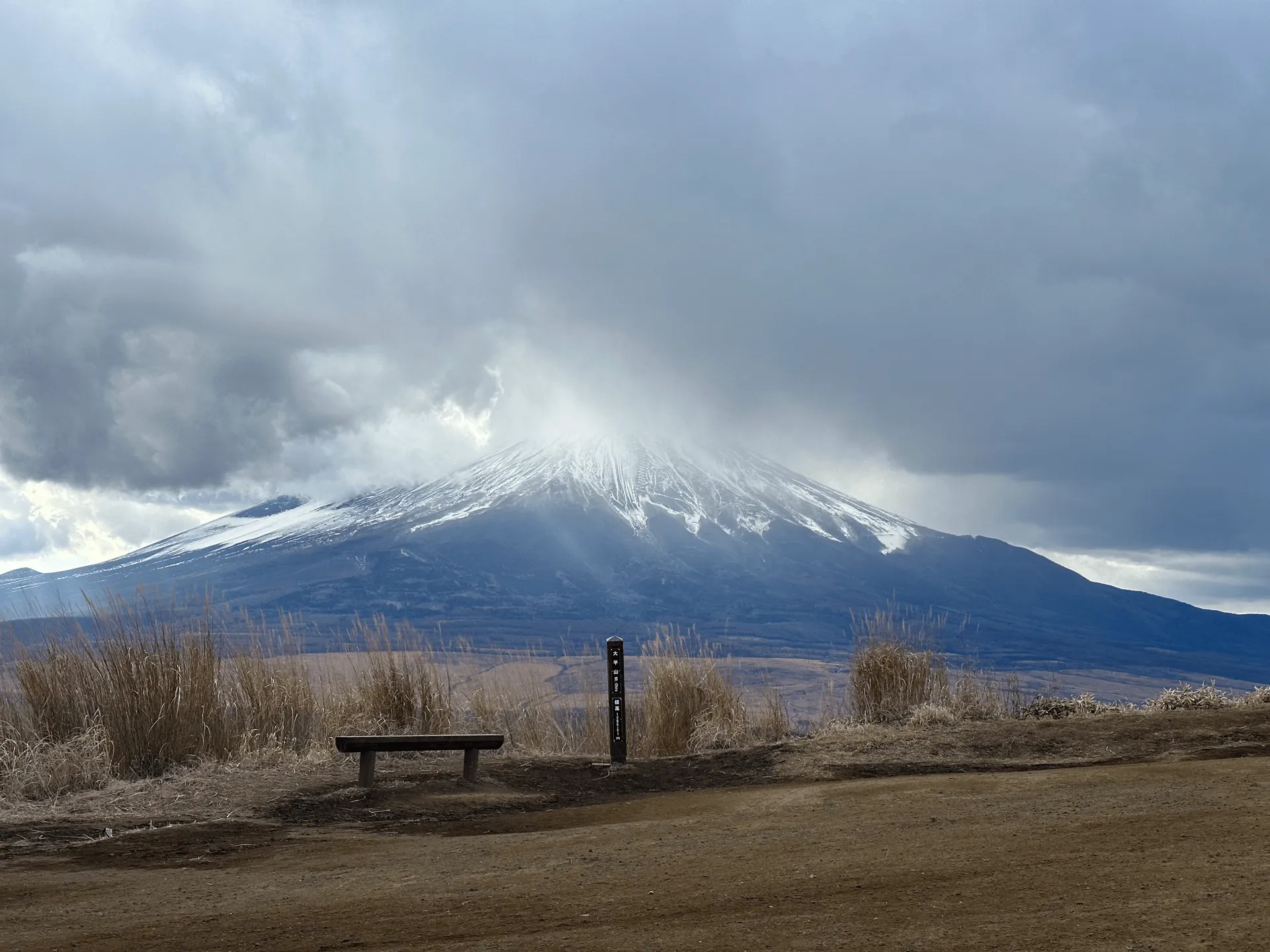

The trail continues a little bit more, with a final bit of descent through the forest before you’re out onto the road back towards Lake Yamanaka-ko.

Meeting the swans at Lake Yamanaka-ko
As we reached the lake, we noticed there were two photographers who were feeding the swans (with bird pellets). I’m not too sure if you are supposed to be doing this, but the pair seemed quite knowledgeable about the birds and the swans seemed very used to humans.
Although we didn’t get a 100% clear view of Mt Fuji today, being able to take some photos up close with these birds was one of the highlights of today’s hike!
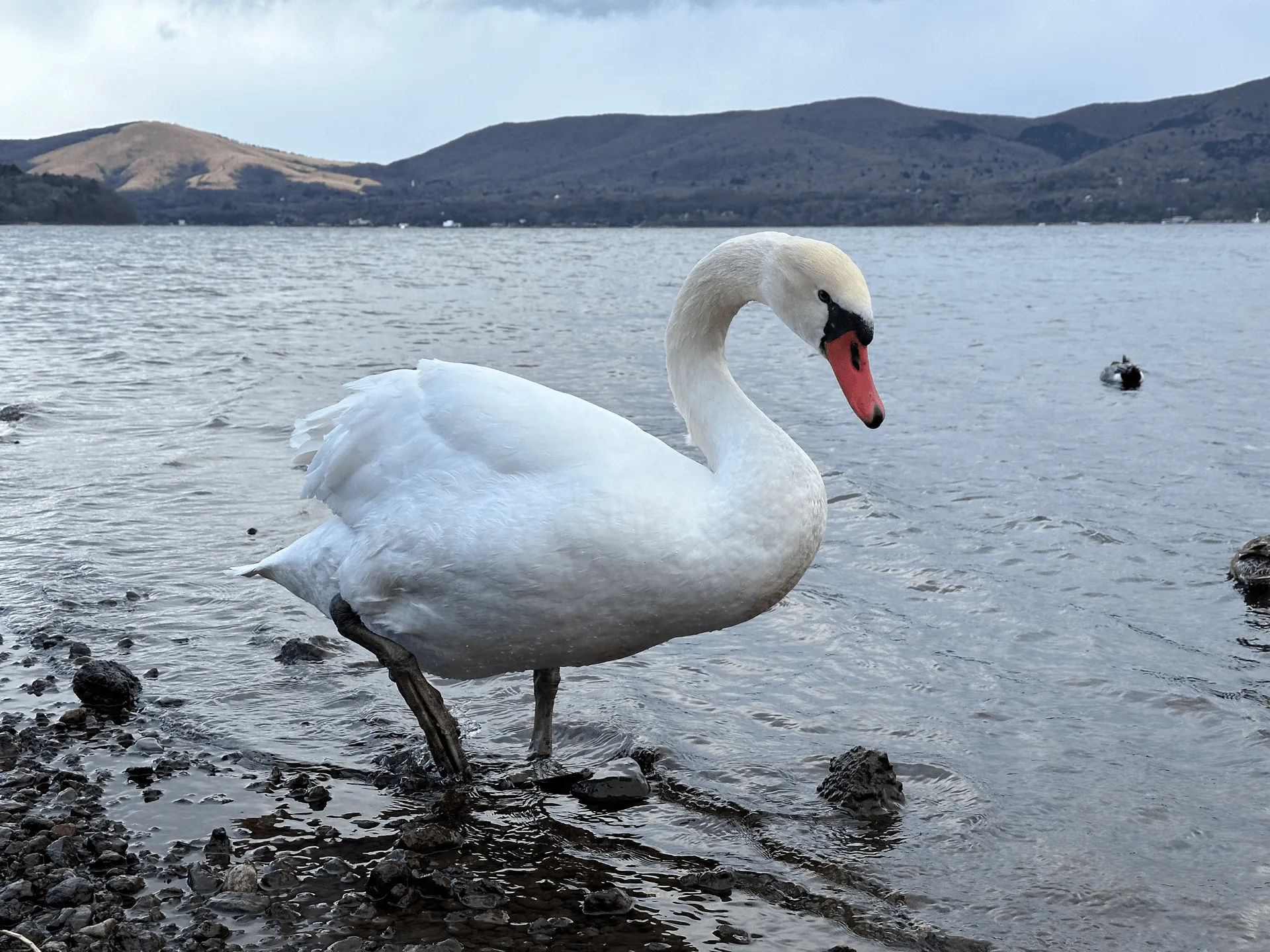
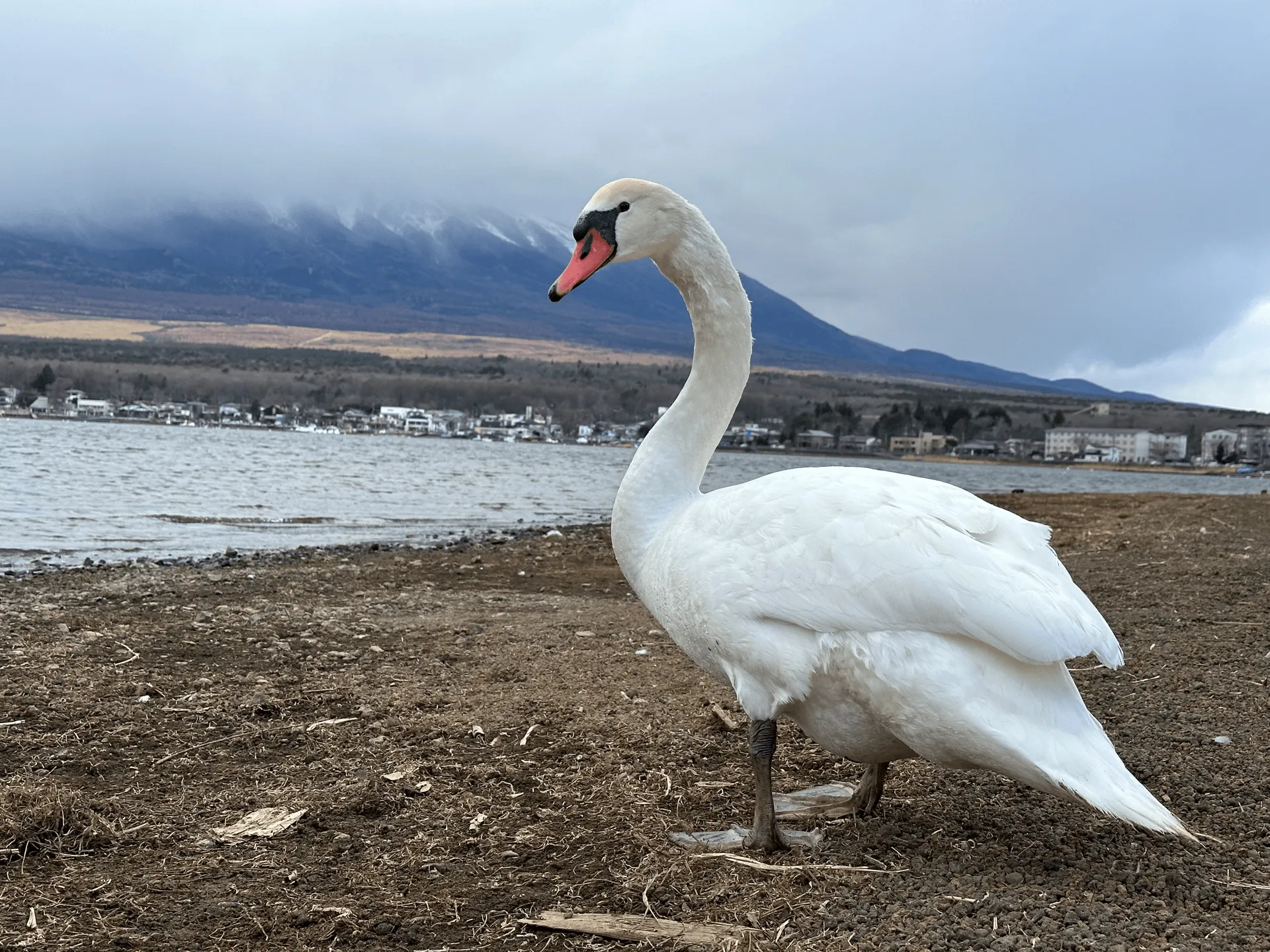
From Lake Yamanaka-ko, you can find a couple of restaurants if you’re looking for dinner. I stopped by the nearby Benifuji no Yu onsen. After a good soak, I hopped on my bus back to Shinjuku.
Hiking course options
| Date climbed | Length | Course time |
|---|---|---|
| 2024-01-13 | 10.1km | 4h40m (the expected time for an average hiker without breaks) |
Beginning your hike at the Mt Ishiwari shrine carpark (石割山神社駐車場), you have 3 main course options:
- A 2.5 hour, 4km loop hike that does a loop around Mt Ishiwari and Mt Hirao
- A 4 hour, 7km loop hike that also extends to Mt Ohira
- A 5 hour, 10km point-to-point course that goes to all three summits, before descending down to Lake Yamanaka-ko
The third course is the one we took. From the bus stop at Yamanaka-ko Hirano (山中湖平野), you’ll walk about 20 minutes to the trailhead where you can begin your hike. The start and ends of the trail may be a little hard to find, so I would recommend using YAMAP or a similar GPS map app. I don’t use Alltrails myself, but they do have a similar course option here.
There is a toilet available near the bus stop, as well as at the start of trail.
Public transport access with itinerary
Mt Ishiwari can be accessed directly via a highway bus from Shinjuku. You will need to book your bus in advance via highwaybus.com. I recommend doing this a week or more in advance if you can, as the first bus departing from Shinjuku tends to become fully booked out the closer you get to the date.
| Time | Location | Transport | Cost | |
|---|---|---|---|---|
| 07:19 | Tokyo station (東京駅) | Train | 210 | |
| 07:33 | Shinjuku station (新宿駅) | |||
| 07:45 | Busta Shinjuku (バスタ新宿) | Highway bus | 2350 | |
| 10:09 | Yamanaka-ko Hirano (山中湖平野) |
The bus terminal (or Busta) at Shinjuku station is accessible via its South Exit. It can be a little hard to find if you’ve never been there before, and it’s also on the third floor of the building. So I would make sure to plan in enough time between getting off the train and transferring to the bus terminal.
Once you get off the bus at Yamanaka-ko Hirano (山中湖平野), the sechdule will give you 6.5 hours to do your hike, which should be plenty of time, with maybe the option to squeeze in an onsen visit as well. With a point-to-point hike, you will get on the bus at a different bus stop, Fuji-san Yamanaka-ko (富士山山中湖), for your trip back to Shinjuku.
Unfortunately due to the tourism around Kagaguchi-ko, the buses can become a little bit delayed with traffic so I would keep this in mind if you had plans afterwards. An alternative option if you wanted to be more flexible on time is to get a local bus to Kawaguchi-ko station after your hike, from which there are trains you can get home on instead. The seats on the express trains back to Tokyo also tend to book out, but if you really need to get back on time, you can stand for the whole train ride instead.
| Time | Location | Transport | Cost | |
|---|---|---|---|---|
| 16:55 | Fuji-san Yamanaka-ko (富士山山中湖) | Highway Bus | 2300 | |
| 19:10 | Busta Shinjuku (バスタ新宿) | |||
| 19:30 | Shinjuku station (新宿駅) | Train | 210 | |
| 19:43 | Tokyo station (東京駅) | |||
| Trip total: | 5070 |
When to climb Mt Ishiwari
Since one of the main drawcards of Mt Ishiwari is the chance to see Mt Fuji, I would recommend climbing it in the colder months (October through to January), when your chances of seeing Mt Fuji increase. There may be snow on the mountain in winter (especially in February), so if you don’t want to hike in snow, I recommend waiting until March or April for your hike.
You can continue to hike Mt Ishiwari for the rest of the year, although in summer your chances of seeing Mt Fuji decrease by quite a bit, and it will also get quite hot.
As well as hiking Mt Ishiwari in mid-January, I’ve also climbed it in May, which was quite pleasant weather - although unfortunately with the clouds I didn’t get to see Mt Fuji at all!
I would recommend checking YAMAP to see the latest conditions before you climb.

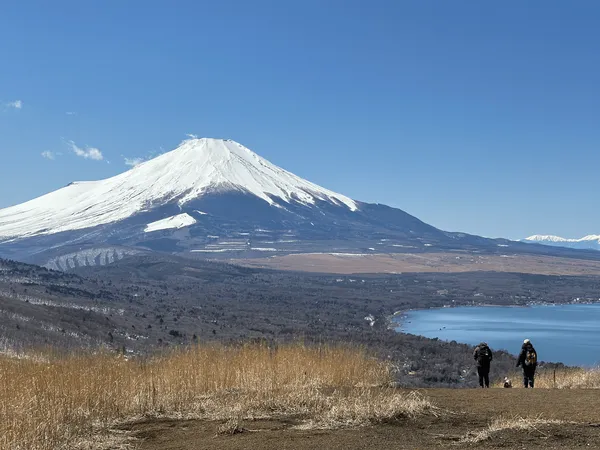
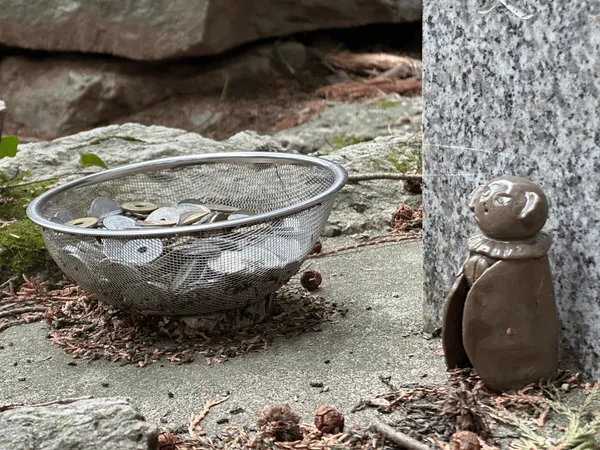
Leave a comment